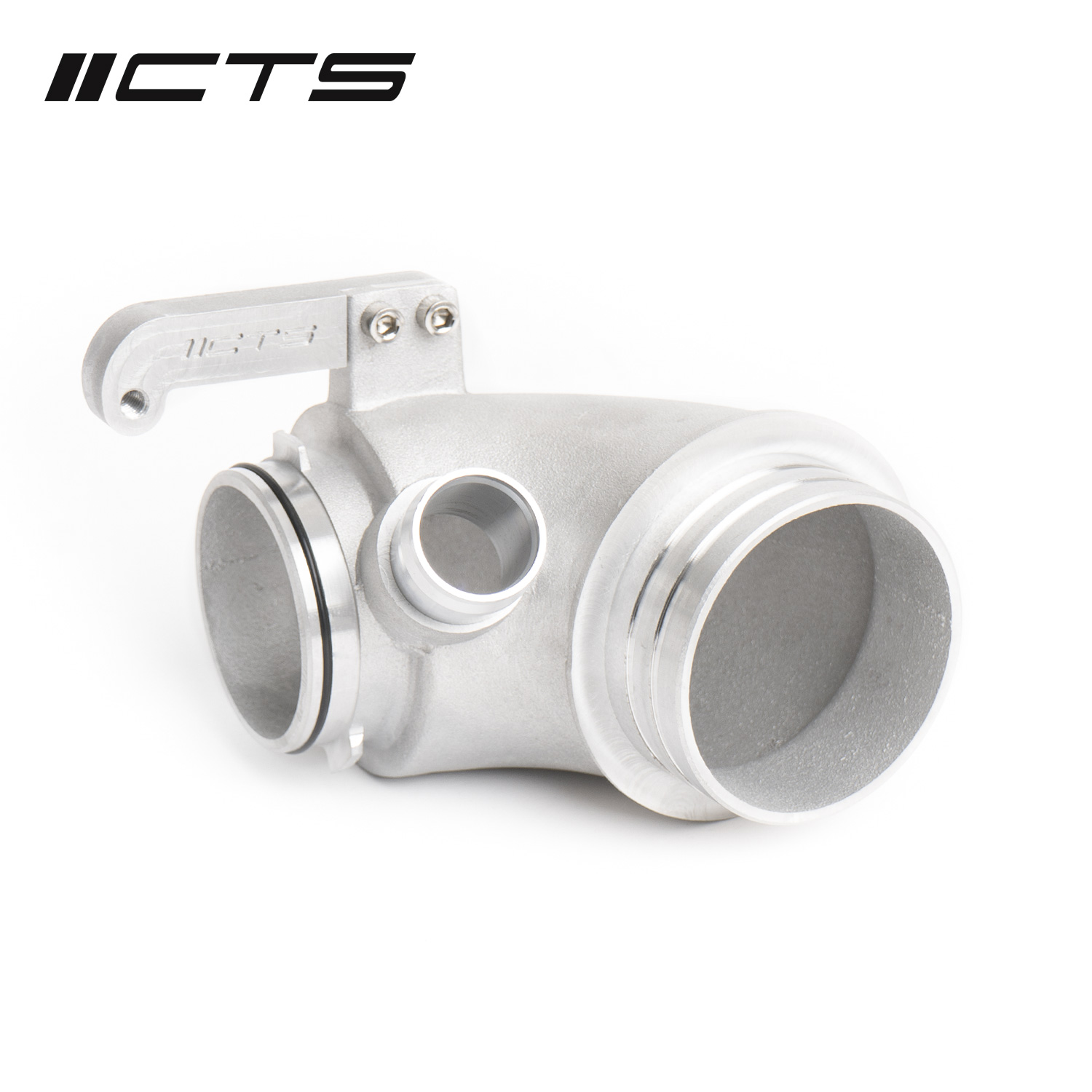Background:
Since conducting a flow test with the CTS Turbo turbocharger inlet elbow the company has released a new cast version of the product.

I’ve not obtained a sample of this version and the only details that CTS Turbo provides about the size of the product is:
Large inside diameter for extremely high flow
CTS Turbo
This particular inlet elbow was featured in the Racingline R600 intake vs Blaze Performance intake “real world” test performed by Brett Harrison where Brett concluded that:

Using these parts:

At the time I assumed the CTS elbow probably had close to a stock turbo-size outlet since most of the twenty inlet elbows I have tested are intended for use with a stock-size turbo and CTS states their product works with “factory turbocharger size“.
An inlet elbow sized to work with a stock turbo would not be a good part to use during a test of intakes using a hybrid turbocharger.
Data analysis:
Recently I came across a video where a shop measured the inside diameter of the CTS Turbo cast inlet elbow, and I learned that the comparison Brett made was more lopsided than I had assumed.
The inside diameter of the CTS Turbo cast inlet elbow measures:
- Inlet – 63 mm
- Outlet – 51.3 mm
In comparison, the old version of the CTS elbow measured:
- Inlet – 66.4 mm
- Outlet – 50.4 mm
The outlet sizes are similar enough not to be a concern, especially since the stock turbo inlet is 49 mm, but the inlet of the newer CTS elbow is a decent amount smaller than the old version.
A smaller opening to the inlet elbow has not correlated with higher airflow.
Shown on the chart are the elbows I have tested comparing the flow rate (CFM) versus the elbow inlet inside diameter (mm). Based on historical trends, the orange marker is where the CTS Turbo cast inlet elbow would place.

Out of the twenty inlet elbows I have measures for, only the stock elbow and APR elbow have a smaller opening.
Compared with hybrid optimized elbows, these measure between 15-20% larger at the inlet versus the stock TIP. The CTS Turbo TIP is 1.7% larger than the stock elbow at the inlet.
Conclusion:
The CTS Turbo inlet elbow dimensions were compared with other turbo inlet elbows and found to be on the smaller end of the range I have measurements for.
Historical data suggests that the CTS cast inlet elbow will support relatively low flow rates compared with other elbows that have been measured.
The CTS cast turbo inlet elbow is likely to be a poor choice to use with a hybrid-size turbocharger.

The newer cast cts inlet opens up several mm wider once inside the inlet past the initial inlet measurement point. This has to have a more positive effect on airflow performance right. You really need to get one of these and see for yourself. Surely they would make the newer one out perform the previous one.
I have tested the CTS cast elbow. It’s among a number of draft posts I haven’t had the time to get to. I’ll post the results tomorrow.
Ok. I see the new post now that include the newer cts inlet. Kinda disappointed. Why would any company that makes anything release a V2 of a product that performs less than the original ? Anyhow, I have it along with an IE v2 intake. Would there be any sense / real world benefit in getting the IE inlet or 032 to replace the cast cts if already installed ? 18 audi A3 s- line, apr stg 1, for reference. Do not plan to go to stg 2 or hybrid or anything like that in the future either
My guess is that there isn’t a great deal of emphasis on performance improvement during the product development. I doubt you’d detect any difference by swapping the CTS elbow to one of those others.
Thank you so much for responding, and even more for these great tests and data analysis you do. Helps alot
You’re welcome!
It’s be nice to see the cast cts with the IE v2, small adapter numbers bc I know you did the large adapter comparison with the dbv2 vs cts. Or with the aftermarket hose and small / normal adapter numbers if you ever use it again
I don’t have the CTS cast elbow any longer.